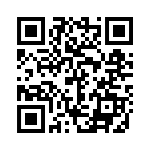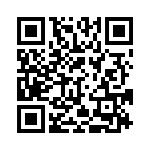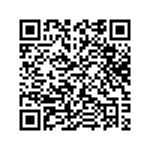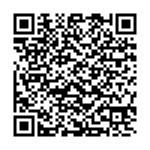7 Trauma Informed Social-Emotional Learning with Professor Maurice Elias
There have long been debates on the inclusion of social-emotional skills in the school curriculum. Some say life skills and competencies are the responsibility of parents and carers. In contrast, others advocate for the education of the whole child. The pressures of adhering to curriculums and preparing for standardised testing has meant educators have had to be creative in meeting students’ different learning and social needs. Is this possible, or are we asking too much of our teachers?
Professor Maurice Elias

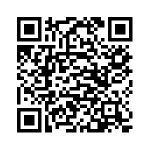 Professor Maurice Elias works in the Department of Psychology at the Rutgers School of Art and Science in Piscataway, New Jersey. Professor Elias has worked in the area of prevention, school-based preventative intervention, and social competence promotion. He was integral in setting up the Rutgers social, emotional, and character development lab, which is dedicated to conducting research in public, private and religious schools. These labs were constructed to help build children’s skills for facing the tests of life and not a life of tests. Professor Elias is the author of several books, including Promoting social-emotional learning: Guidelines for educators; and The other side of the report card: Assessing students’ social, emotional, and character development.
Professor Maurice Elias works in the Department of Psychology at the Rutgers School of Art and Science in Piscataway, New Jersey. Professor Elias has worked in the area of prevention, school-based preventative intervention, and social competence promotion. He was integral in setting up the Rutgers social, emotional, and character development lab, which is dedicated to conducting research in public, private and religious schools. These labs were constructed to help build children’s skills for facing the tests of life and not a life of tests. Professor Elias is the author of several books, including Promoting social-emotional learning: Guidelines for educators; and The other side of the report card: Assessing students’ social, emotional, and character development.
Click or scan the QR code to learn more about Professor Elias’ work .
Prof. Elias: My training is as a clinical psychologist. In my work, primarily with children and families, I noticed the importance of social-emotional factors in everything that happens. I was drawn increasingly toward the prevention side of things. I also found myself very interested in what happens when kids are in school. This is where kids spend such a vast proportion of their lives. It seemed to me that many of the difficulties that kids were encountering and the routes to improving their lives took place in schools. About 40 years ago, I devoted my career to working directly in schools and understanding how schools promoted kids’ social-emotional needs. My early career work was with kids with severe behavioural and emotional difficulties. Again, these are the kids whose social-emotional competencies are critical.
When I was doing a practicum placement during my training in graduate school, I would sit in the staff room, and no one would notice me or talk to me. Still, I could hear everything they were saying. It was like I had a Harry Potter cloak of invisibility, and everyone was complaining about ‘if the school would do this and if only the school would do that. If only the school had been doing this’. Listening to everything they were saying, I would often think that there was no reason these things can’t happen. Then as I was seeing clinical cases, it became clear how often kids were being ill-served by what was happening in their schools and, of course, sometimes in their homes and communities. That experience drew me much more working toward strengthening schools to be a positive influence on the lives of children.
Importance of Social-Emotional Skills and Competencies
Dr. Krishnamoorthy: How do you define social-emotional skills and competencies, and why do you think they’re important for teachers and schools to work on?
Prof. Elias: I view social-emotional competencies to be a lot like oxygen in that they are essential for life. I view social-emotional competencies to be a lot like oxygen in that they are essential for life. We are social beings, and virtually everything we do involves other people. We are not islands of independence; therefore, we exercise our social-emotional skills from birth. From the moment kids learn how to cry – to get their parent’s attention – all the way through to the end of life. Our ability to interact with other people is an essential life skill. We need to learn to manage and recognise our emotions, work in groups, and be good problem solvers. These are things that are foundational to being a human.
One analogy that I like to talk about is reading. Of the many critical academic skills, I think we would agree that if you don’t know how to read, your life will be far more difficult than otherwise. My analogy is that if you don’t know how to read people, your life will be far more difficult than it otherwise could be. So, I view social-emotional competencies as integral to life’s success.
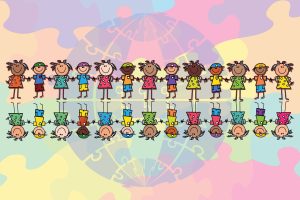
Dr. Krishnamoorthy: We hear a lot from teachers and others who attend our training, asking ‘when did social-emotional skills become the work of teachers?’ Shouldn’t this be the work of parents and families? How would you respond to this?
Prof. Elias: If we reflect on the teachers that we valued most, that were most influential on us growing up, we will mostly conclude that the social-emotional aspects of those teachers made the difference to us. When I think about why we go into education, the answer is typically not to help kids get test scores perfect but because we want to touch the lives of children. We want to touch their hearts and souls and help make their lives better. To do that, we must address their social-emotional well-being. Some teachers may not feel that way, and I quite honestly feel bad for their students, but it’s not an either/or, it’s a both. We can improve our student’s academic competencies and skills while not losing sight of the human element that will enable them to use their skills for good. it’s not an either/or, it’s a both. We can improve our student’s academic competencies and skills while not losing sight of the human element that will enable them to use their skills for good.
One of the things we’ve done in our most recent work is to understand that skills and virtues need to be considered together in our work. Our work as educators is not values neutral. In fact, we only want to have smart kids who want to do good. Theodore Roosevelt, former President of the United States, once said that to educate someone in mind but not in morals is to create a menace to society Our work as educators is not values neutral. Theodore Roosevelt, former President of the United States, once said that to educate someone in mind but not in morals is to create a menace to society. . I think that’s a very exceptional quote. I tell people that in the United States, our typical school year is 180 days. Kids spend maybe six or seven hours daily in school and with teachers. Kids spend at least, an average, of perhaps an hour a day interacting with their parents. So I ask, “who’s most invested in kids being decent, pleasant companions”? And the answer is, it should be teachers. If I spend 180 school days with you, I don’t want you to be miserable.
What we find in the data is that your instructional time increases as you develop the kid’s social-emotional skills in the classroom. You have an increased positive atmosphere for deeper discussion. You get better listening, better questioning, and better thinking. So, teachers should not feel that somehow parents have the province for creating decent human beings. It’s a collective enterprise. I tell school administrators that even if you hate children and only want high test scores, you should still be interested in their social-emotional competence because if they don’t have that, it’s tough for them to excel academically.
I think we have to acknowledge that social emotional skill development is not a meaningful part of most teachers’ training and preparation, so we can’t be naive and think that just because it’s important, you can just do it. That’s not the case. Teachers need guidance and support to do this. Not tremendously, because teachers mostly know kids. They know about child development and have wonderful pedagogical techniques. Mobilising all that in the service of social-emotional skill learning and building positive character takes support and some resources. I don’t want folks to think that somehow, they should just do it. But it is something that taking the time to do and learn has tremendous payoffs.
![]() Fundamentals of Social-Emotional Learning
Fundamentals of Social-Emotional Learning
The Values, Virtues and Character Framework
Dr. Krishnamoorthy: Why is it important to be explicit about your values as a teacher?
Prof. Elias: In past years, our work has focused on school environments – primarily urban environments and with children of colour. We also focused on children from families living in poverty. Poverty is itself a chronic source of trauma. Some of these kids have experienced intense violence; they have incarcerated parents, and there’s a whole litany of detrimental things. We have found that when these kids walk into the school building, they are not first interested in finding out about the great books or in hearing about the ancient history of something.
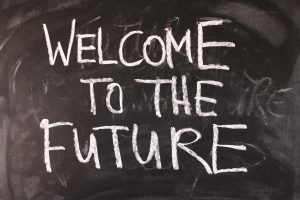
They are looking to walk into an environment in which they are welcomed. Where they are valued and cherished. We have seen that the concept of positive purpose is an essential anchor in working with traumatised kids.
When you’ve experienced trauma, it’s as if your moorings have been ripped away. When you’ve experienced trauma, it’s as if your moorings have been ripped away. It’s as if the ground under your feet is not stable. It’s the fact that when you go home, you don’t know what’s going to happen, but you suspect it’s not going to be good. Then when you come into the school. If you also don’t know what’s going to happen and you’ve come to expect it’s not going to be good, this leaves you in an awful place mentally. We want our kids to feel that they’ve come to a school where their sense of positive purpose is recognised, valued and supported. We want our kids to feel that they’ve come to a school where their sense of positive purpose is recognised, valued and supported. You support a positive purpose in part by building kids’ social-emotional competencies. Still, the question then is toward what end? We’ve identified five virtues that we believe are essential for trauma-informed education.
The first virtue is ‘optimistic future mindednesses’. We’ve got a lot of kids who’ve lived in a trauma context. We’re worried that another trauma will happen, or they’re in a context of chronic trauma like poverty and have no sense that things will get better. When we’ve done surveys of some of these kids, we found in one middle school that we work in that 50 percent of the kids said that they don’t believe they’re going to have a healthy, happy life in the future. If I don’t believe I will have a healthy, happy life in the future, I won’t be too motivated to learn calculus, chemistry, or anything else. We have to help kids develop this optimistic future-mindedness. This is more than just a growth mindset. This is willing to see themselves in the future positively, and that’s not a simple thing. It is vital.
The second virtue is ‘compassionate forgiveness and gratitude’. We’ve got a lot of kids we work with who’ve had bad things happen to them in their life, and they blame people for it. I don’t blame them for blaming people for it, but they hold grudges. Holding a grudge is the surest way of keeping yourself stuck in the situation you’re in. Compassionate forgiveness and gratitude are about giving the kids the virtue of being able to accept what’s happened, as bad as it is, and to be able to move on. If our kids can’t move on, then they sit in our classes, consumed with thoughts of revenge and an ‘oh, poor me’ mindset. We need to teach kids about forgiveness, the power of forgiveness, and the power of gratitude to open up their hearts.

Once these kids can forgive and open their hearts a little, we must engage them in the third virtue, ‘generosity’. It may seem paradoxical, but we have found that many of our traumatised kids come to feel that they have very little value. They are also the recipients of a lot of remediation. I don’t know about you, but when I get up in the morning, I don’t open up my window, take a deep breath of fresh air and say, oh, I can’t wait to have remediation experiences today. This is not what I’m looking forward to, but this is the life of many of our kids. So we ask the question, how do we help our kids feel generous? How do we help them feel that they have something to offer? They are motivated to learn and improve their social-emotional skills and academic knowledge when they think they have something to offer. So helpful generosity is another very essential virtue.
The fourth virtue is ‘constructive creativity’. Our kids who are traumatised need to be able to think out of the box. In fact, when you look to the future, the future belongs to the creative thinkers. The innovators. We need them to think creatively and nurture their creativity. We need them to develop that sense that I may not have these traditional skills, but I have something to offer.
The fifth and final virtue of ‘responsible diligence’. This is not simply grit. It’s more than grit. Responsible diligence is the idea that our kids will set goals and work toward them despite setbacks. We want our kids to be responsibly diligent. The sad truth is that our troubled kids often have to work twice as hard to get half as far. This is sad and unfair, but it’s the reality. If they’re not imbued with encouragement to keep going despite difficulties, they will probably not persist. We need them to be able to persist. Hence, from our perspective, a set of virtues is required for kids to achieve a positive purpose, which motivates them to develop their skills. This is particularly the case with kids who are involved in both acute and chronic forms of trauma.
![]() Social and Emotional Learning and Character Education
Social and Emotional Learning and Character Education
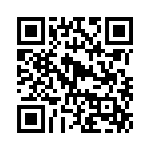 Learn more about the theoretical and empirical foundations of Prof. Elias’s Values, Virtues and Character framework in this article. Click or scan the QR code to read the paper, ‘Social and emotional learning, moral education, and character education: A comparative analysis and a view toward convergence’.
Learn more about the theoretical and empirical foundations of Prof. Elias’s Values, Virtues and Character framework in this article. Click or scan the QR code to read the paper, ‘Social and emotional learning, moral education, and character education: A comparative analysis and a view toward convergence’.
Dr. Krishnamoorthy: I’m interested to understand how this gets taught and what it looks like. Can you give an example of how this looks in the classroom? And does this influence disciplinary action? One of the problems we often have is that schools and teachers can be overly accommodating to students’ difficulties. The students then do not have very challenging learning experiences. Or it goes the other way where teachers have unrealistically high expectations, and it becomes and feels very punitive to the student.
Prof. Elias: This links back to the issue of bullying, where we expect individual students to somehow stand up for bullying when they see it. This is an unrealistic expectation unless it’s the norm unless we create a whole school that is designed to be a supportive learning organisation. When that happens, it’s easier for the classroom to reflect those norms. When that doesn’t happen, then the classroom is, in essence, creating a normative island that becomes a little harder to sustain.
All learning is cumulative. The key for the individual teacher is to be very clear about the positive, supportive classroom norms and identify and exercise the student’s strengths. This is where we have high expectations, which are not inappropriate. Still, the problem is that we set high expectations for the areas where kids need the most assistance, which is not helpful. Then when we are lenient in the areas where the kids are weakest, that’s not helpful because we need our kids to excel. Working through our kids’ strengths allows us to have areas where we set high expectations so kids can feel competent. Then when they feel competent, they can take on the challenges of the areas where they’re not so good.
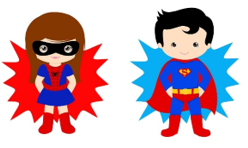
Similarly, having low expectations of the kids doesn’t do them any favours. We do have to recognise that we can’t expect them to go from point A to point Z without all the intervening steps. We must be thoughtful about how we scaffold our expectations for the kids. Part of this is the incentive systems that our teachers must operate under. Sometimes they may feel, not inappropriately, that they’re being asked to do miracles. They’re being asked to move children along in developmentally impossible ways, as opposed to moving them along like a relay race, where the key to success is not just how fast each person runs but how well they pass the baton. If you don’t pass the baton successfully every time, you will not win the race, no matter how fast each person is. The same thing is true in education. For teachers, it’s easier when the school has a climate that’s positive and supportive and reflective of the same values that they would like to have incorporated within their individual classrooms. In most countries I’ve ever been to, there are schools that people say, “Gosh, that’s a great school”. When you go into one of those schools, you feel the climate, you feel the warmth, you feel the support, you feel the camaraderie. If you analyse it, you’ll see that they are attending to the kid’s virtues, character and social-emotional competencies. They may not be doing it with an explicit curriculum, but when you take out the magnifying glass, you see all the signs are there.
![]() Positive School Climate: Eidsvold State School
Positive School Climate: Eidsvold State School
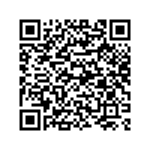 The leadership of one small school took steps to implement a whole-school change of practice to build positive student and community wellbeing and along the way significantly enhanced learning outcomes. Eidsvold State School is a small rural Prep to Year 12 school located in the North Burnett Regional Shire in Queensland. The school is co-ed and has a high Indigenous English Language or Dialect (IELD) population with 52% of students identifying as Indigenous. The Wakka Wakka, Wulli Wulli and Goreng Goreng language and cultural groups are represented in the Eidsvold community.
The leadership of one small school took steps to implement a whole-school change of practice to build positive student and community wellbeing and along the way significantly enhanced learning outcomes. Eidsvold State School is a small rural Prep to Year 12 school located in the North Burnett Regional Shire in Queensland. The school is co-ed and has a high Indigenous English Language or Dialect (IELD) population with 52% of students identifying as Indigenous. The Wakka Wakka, Wulli Wulli and Goreng Goreng language and cultural groups are represented in the Eidsvold community.
Click or scan the QR code to learn more in this case study provided by the Student Wellbeing Hub.
Differentiating Social-Emotional Skills across Students
Dr. Krishnamoorthy: How can you deliver social-emotional curriculums in a differentiated manner?
Prof. Elias: My colleagues and I have a book on assessing social, emotional, and character development. It’s not simple, yet we expect teachers to do this all the time. When teachers implicitly or explicitly sign report cards, they include information about the kids’ social-emotional competencies. This is why the data shows that long-term success is better predicted by report card grades than test scores. Report card grades implicitly and sometimes explicitly include qualities and characteristics about the kind of person the student is.
Let’s say I’m a middle school or high school teacher, and I’ve got a kid I see an hour a day. Perhaps I’m an elementary school teacher, and I’ve got kids I see maybe five hours a day. How can I not learn about their social-emotional skills? If we give teachers a template that breaks down social-emotional skills for them, including the primary areas of emotion recognition, self-control, emotion management, awareness of others, empathy, problem-solving, and ability to work in groups. If we broke that down developmentally, teachers would indeed be able to develop nuances for the kids. They would then be able to see what these students need to work on.
Teachers are fantastic. Teachers are fantastic because they get to know the students, Teachers are fantastic because they get to know the students and they make differentiations on many levels. They don’t make more precise and explicit social-emotional differentiations because they’ve rarely had a framework for it. If given a framework for it, they can do it, but they’re already doing it implicitly. When teachers form groups of kids in workgroups, they often think those kids get along well. I don’t want to have these kids in the group because these kids never listen to anybody. I need to have a kid who listens, I need to have a kid to cooperate, so we need a helpful child with these other students. I’ve got an inclusion class, so I’m going to have some of my kids with the best social skills paired up with some kids with fewer social skills. Teachers are doing this stuff all the time. They just need a little more guidance and support.
![]() Activating Strengths and Virtues in Children
Activating Strengths and Virtues in Children
Advantages of Inclusion to Social-Emotional Learning
Dr. Krishnamoorthy: We often hear that the most problematic students demand so much time and energy from the teachers and the school. What are your thoughts about inclusion, particularly for the kids we need to be trauma-informed for?
Prof. Elias: There is a saying that is used in some schools, in essence, that we are all responsible for each other. I believe that is a value and a virtue. If I have kids coming into my class who are having problems, I need to be having conversations with all my class about how we help each other. This is where the strength part comes in. I don’t want kids coming in who are included to somehow be seen as a deficit.
I have a very close colleague, Timothy Shriver, who works with International Special Olympics. Tim Shriver says that we need to not use the term disabilities but use the term different abilitieswe need to not use the term disabilities but use the term different abilities. Every child has different abilities. Every child has things they are not so good at, and they have things that they are good at. That needs to be part of the conversation when that kid comes in.
I work with a programme in Highland Park, New Jersey, where they had an influx of kids who were diagnosed with Autistic Spectrum Disorder. They taught all students in the school about Autism. They helped the kids understand what Autism is, its symptoms, and what it looked like when kids had difficulty. They learnt what self-stimming behaviours were and why kids were doing repetitive talking or were not talking at all. They learnt how to support those kids. And for years, they’ve had an exemplary and award-winning programme. It’s summarised in an article called ‘To Reach for the Stars’, written by Trina Epstein. That article talks about the fact that inclusion is the keyword, and the question is, ‘how do we all include one another regardless of circumstances?’
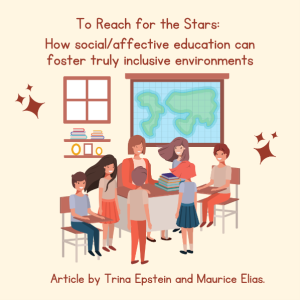
![]() To Reach for the Stars
To Reach for the Stars
When kids have experienced personal life trauma, that’s something that people need to know about and talk about. When there’s community-wide trauma, and it’s all shared, that can be easier because we’re all included in that trauma. Regardless, the point is, how do we provide a safe, supportive, caring and helpful environment for everyone that walks in that door in our classroom? And how do we see every one of those kids as a potential asset for what we’re doing rather than a liability? Not someone who will take away my instructional time. If you’re attending to me because of my competencies, you’re using my assets in the classroom, then I’m not going to cause you too much trouble. As we make kids more hopeful and generous, they will exhibit fewer behaviour problems, and that’s the link to the discipline. As we make kids more hopeful and generous, they will exhibit fewer behaviour problems, and that’s the link to the discipline.
One of the things we’ve started is the Academy for Social-Emotional Learning in schools. We’ve done this for the reasons alluded to earlier: many teachers want to get better at these things but don’t have places to go to do that. The Academy is an online certificate programme where teachers and counsellors, psychologists, social workers, and all student support service providers can come to develop their expertise in delivering social-emotional and character development to their classrooms. As well as building a positive classroom, culture and climate. We have many educators from many countries who have come together to build skills in delivering social-emotional learning in schools. We find that this shared international learning environment is just wonderfully enriching. Kids are kids all over the world, and teachers are teachers all over the world. We share this common set of goals and problems that we can solve together. We also have a similar certificate programme for school leaders because, as I was talking about earlier, the task of creating a welcoming, positive school culture and climate, a school of social-emotional competence and character. We feel that without that kind of support, we’re making pronouncements to teachers, but we’re not helping them to walk the talk. And we want people to be able to walk the talk.
Chapter Summary
- Social-emotional skills are essential life skills and are used by humans from birth.
- The most influential teachers we remember are generally those that expressed well developed social-emotional skills. Teachers can improve students’ academic scores and their social-emotional skills, it doesn’t have to be either/or.
- The five virtues essential for trauma-informed education: optimistic future mindedness, compassionate forgiveness and gratitude, generosity, constructive creativity, and responsible diligence.
- Creating a school-wide culture of warmth and responsiveness to social-emotional needs is essential to kids’ success at school and staff wellbeing. Long term success is better predicted by report card grades as teachers are including elements of kids’ social-emotional learning and capacity at an implicit level.
![]() Listen to the full interview on the Trauma Informed Education Podcast
Listen to the full interview on the Trauma Informed Education Podcast
References
CASEL. (2021). Social and emotional learning fundamentals: SEL 101 with CASEL [Video]. YouTube. https://www.youtube.com/watch?v=jgKNn-JcYPE
Elias, M. J., Parker, S. J., & Kash, V. M. (2008). Social and emotional learning, moral education, and character education: A comparative analysis and a view toward convergence. In L. Nucci & D. Narvaez (Eds), Handbook of moral and character education (pp. 264-282). Routledge.
Epstein, T., & Elias, M. (1996). To reach for the stars: How social/affective education can foster truly inclusive environments. Phi Delta Kappan, 78(2), 157.
Krishnamoorthy, G. (Host). (2017, Oct 27). Trauma informed social emotional skills with Maurice Elias [Audio Podcast Episode 50]. In Trauma Informed Education. Soundcloud. https://soundcloud.com/trauma-informed-education/boosting-learning-with-social-emotional-skills-with-maurice-elias?in=trauma-informed-education/sets/expert-interviews&utm_source=clipboard&utm_medium=text&utm_campaign=social_sharing
Student Wellbeing Hub. (n.d.). Leadership and inclusion: Eidsvold P-12 State school case study. https://studentwellbeinghub.edu.au/educators/illustrations-of-practice/leadership-and-inclusion/
VIAStrengths. (2016). Helping your child be their best [Video]. YouTube. https://www.youtube.com/watch?v=42KfMq8TgPM

